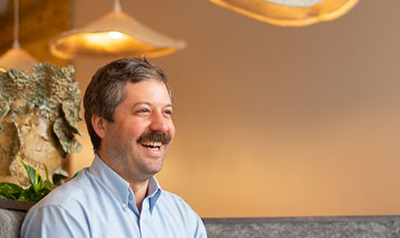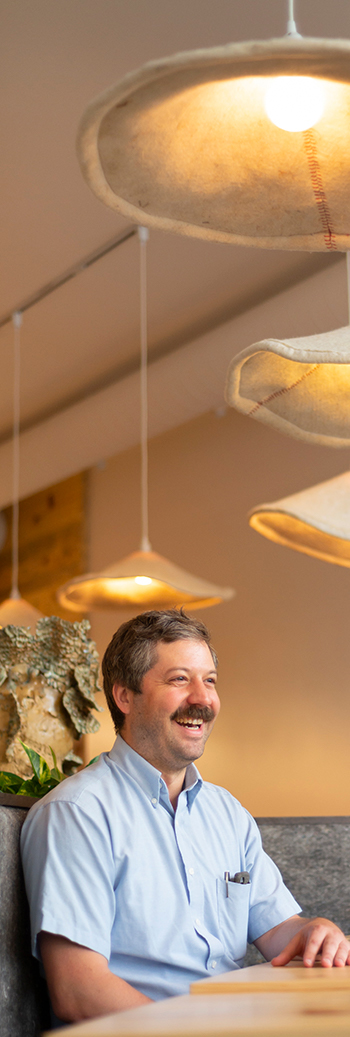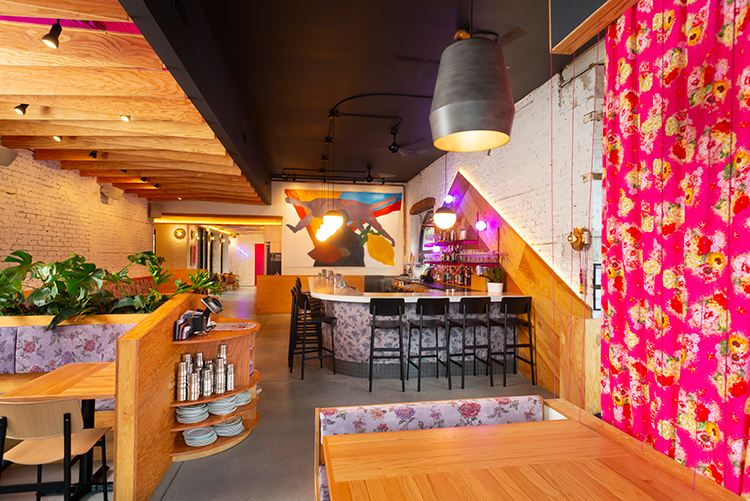
Charlie Vinz (ARCH ’04), founder of the Adaptive Operations architecture studio, is building a reputation as a top restaurant architect, thanks to his work at culinary hot spots such as Chicago’s Parachute restaurant, whose chefs earned a 2019 James Beard Foundation Award. Yet Vinz isn’t drawn to restaurants per se as much as he is to working with fellow artists who see architecture as part of a larger creative vision. Chef-owned restaurants fit that bill.
Vinz’s emphasis on seeking out inventive partners was honed as an Illinois Institute of Technology student, especially during a semester he spent studying at Germany’s Bauhaus-Universität Weimar in 2002.
“It was a pretty magical little place,” Vinz recalls.
Vinz explains how his Bauhaus background helped to shape two projects this year:
Photos: David Ettinger


Project: Superkhana International
Description: Modern Indian restaurant
Bauhaus Influence: Incorporating purpose-built elements
“A huge part of the design thought process focused on how to consider the experience and expectations for a space that serves Indian cuisine, without falling back on tropes. As I researched traditional Indian designs, I gravitated toward the rich history of textiles. Chintz, in particular, became a really exciting entry point for me. All the upholstery at Superkhana is dead-stock chintz fabric that I dyed using an old natural process that ties it back to India’s history as a global textiles center. And it fit our concept for a clean, raw, modern aesthetic, but layered with loud, brash, exciting textiles.”

Project: Wherewithall
Description: Follow-up restaurant by Parachute chefs Beverly Kim and Johnny Clark
Bauhaus Influence: Creative collaboration
“[Clark and Kim] are fun people to work with because they have a similar approach in terms of wanting to try things out that they haven't seen before. For example, we decided not to have communal tables to help differentiate Wherewithall from Parachute, but we still wanted to create that sense of having a shared experience. We built what I call a banquette island: everything’s pushed off the walls and into the center of the room. It’s an unusual layout, and it takes away some flexibility, but we believe it makes up for that by being more comfortable and also creating this striking effect that ties the whole room together.”